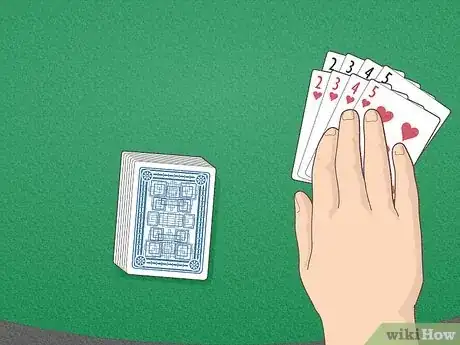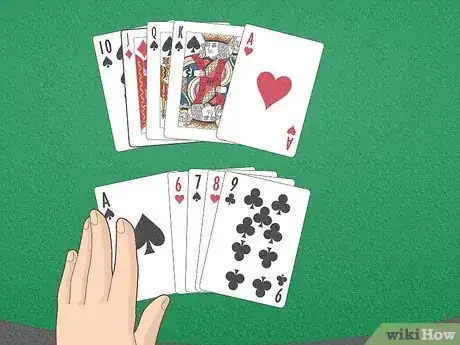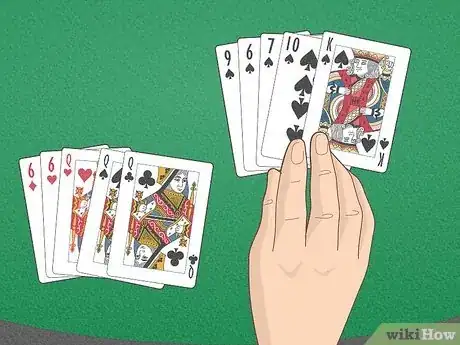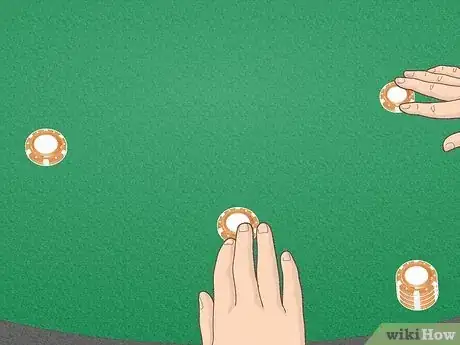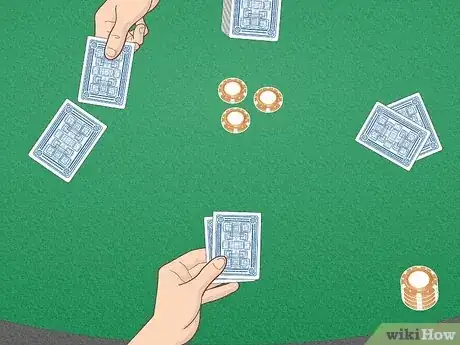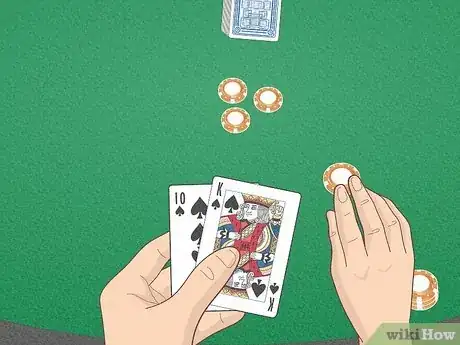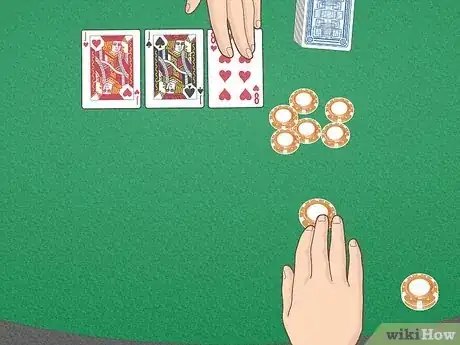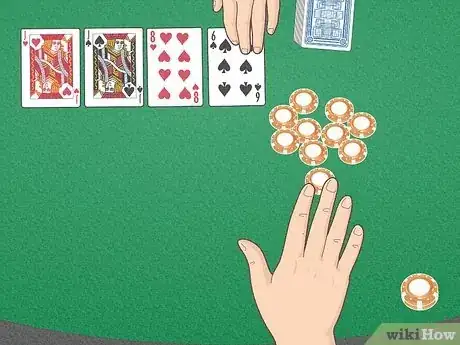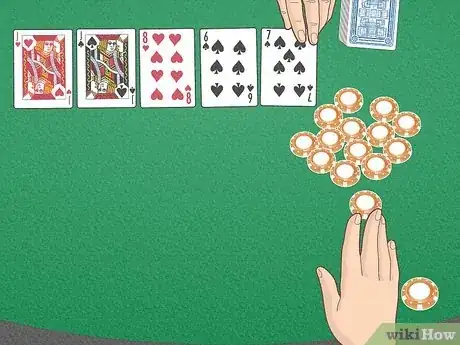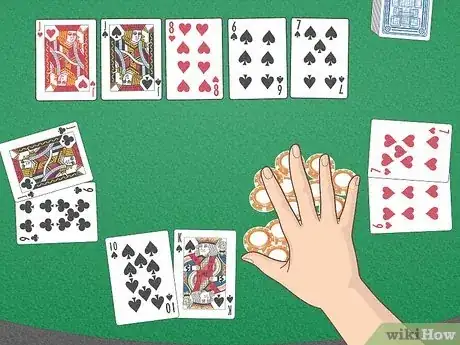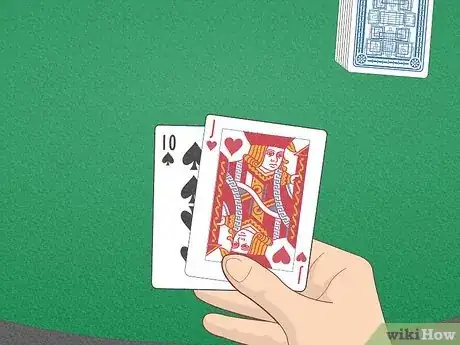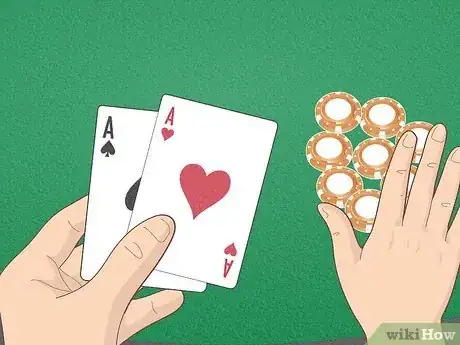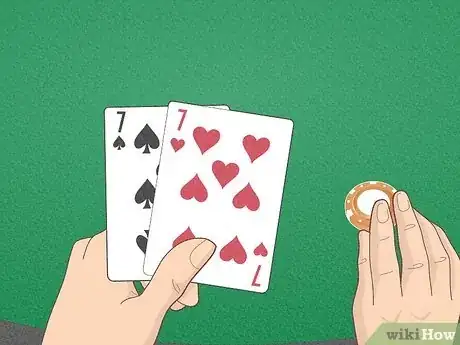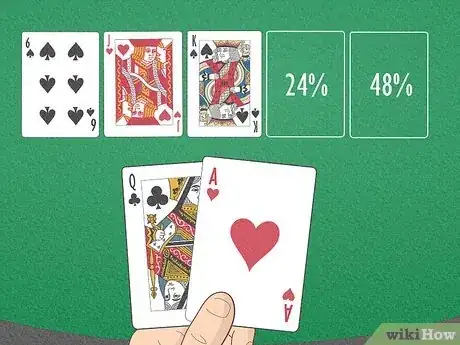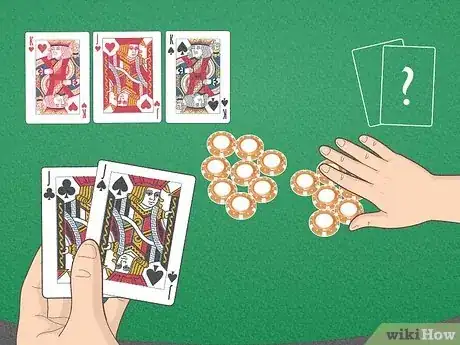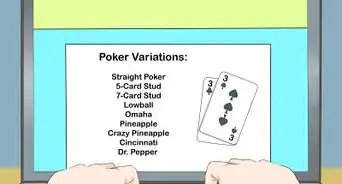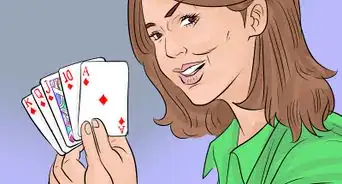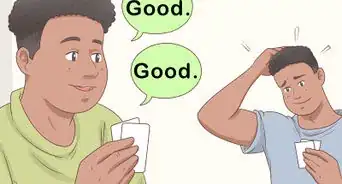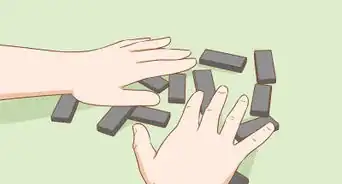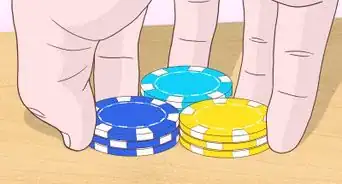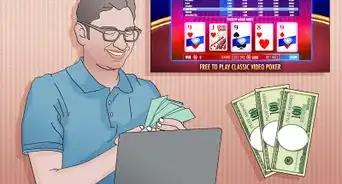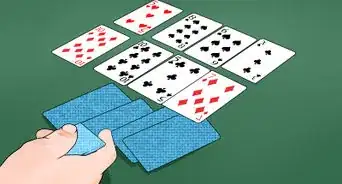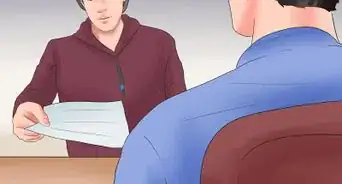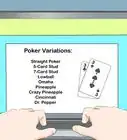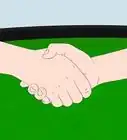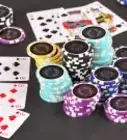This article was co-authored by wikiHow staff writer, Hunter Rising. Hunter Rising is a wikiHow Staff Writer based in Los Angeles. He has more than three years of experience writing for and working with wikiHow. Hunter holds a BFA in Entertainment Design from the University of Wisconsin - Stout and a Minor in English Writing.
There are 12 references cited in this article, which can be found at the bottom of the page.
This article has been viewed 1,773 times.
Learn more...
If you're looking to spice up poker night, short deck poker is an exciting variation on Texas Hold'em that you should try out. Also known as Six Plus Hold'em, short deck poker uses a smaller deck, so you have better odds at high-scoring hands. Even though you probably know most of the rules, there are some key changes you should know before you start playing. If you’re curious about how short deck poker is different, keep reading to learn the rules and best strategies.
Things You Should Know
- Play short deck poker with a 36-card deck that doesn’t use any 2s, 3s, 4s, or 5s. Aces can count as both high and low cards in a straight.
- A flush is stronger than a full house since it’s more difficult to make in your hand. You can also play so a three-of-a-kind beats a straight.
- Straights, three-of-a-kind, and two-pair hands are more common, so starting with a pair of cards isn’t as powerful as in Texas Hold’em.
- Place bets based on the 2 cards in your hand and the 5 cards on the table. The person with the highest scoring hand wins the round’s pot.
Steps
Round Overview
-
1Ante in. All the players make the same minimum bet by adding poker chips to the pot, starting to the left of the dealer and going clockwise around the table. When it’s the dealer’s turn, they pay twice the amount to ante in.[4]
- If you’re playing at home, change who deals after each hand.
- Some short deck poker tables have two players pay “blinds” instead. The small blind is the person to the left of the dealer and pays half of the minimum bet. The big blind is the person to the left of the small blind and places the minimum betting amount.
-
2Deal 2 cards to each player. The dealer shuffles the cards and passes them out 1 at a time to each of the players face-down. Every player can look at their own cards, but should keep them a secret from one another.[5]
-
3Make bets based on your starting hands. Starting with the person to the left of the dealer, players can choose whether they want to check, call, or raise the bet after looking at their 2 cards. If a player isn’t happy with their hand for the round, they can fold and go out for the round instead.[6]
- If you check, you decide not to make a bet. You can only check if no one else made a bet this round.
- When you call or raise, add your poker chips to the pot in the middle of the table.
- Once all the players have made or called the same bet, the betting round ends.
-
4Put 3 face-up “flop” cards on the table and place bets. The dealer “burns” the top card of the deck by setting it aside face-down. Then, they reveal the next 3 cards, known as the “flop.” Starting to the left of the dealer, players now check the value of their hands including the flop cards and can choose to check, call, raise, or bet again.[7]
-
5Reveal the “turn” card and make another round of bets. After everyone finishes their second round of bets, the dealer burns the top card again and flips the next card over, known as the “turn”. Players go through another betting round, checking if the new card helps them make a high-scoring hand.[8]
-
6Flip the “river” card and make final bets. The dealer burns the top card and flips over the next card, also known as the “river”. Any player that’s still in makes one more round of bets, trying to make the best 5-card hand using their 2 cards and the cards on the table.[9]
- Any player can use one, both, or none of the cards they were initially dealt to form their highest scoring hand.
-
7Players reveal their cards and the highest hand wins. Any player that was still in after the final bet reveals the 2 cards they were holding. Everyone compares their hands to see who has the highest value, and whoever ranked highest wins all the money in the pot.[10]
References
- ↑ https://core.ac.uk/download/pdf/287227314.pdf
- ↑ https://youtu.be/gtiAJhx0ACU?t=42
- ↑ https://www.casino.org/blog/short-deck-poker/
- ↑ https://www.casino.org/blog/short-deck-poker/
- ↑ https://www.wsop.com/pdfs/structuresheets/structure_1622_17408.pdf
- ↑ https://www.888poker.com/magazine/strategy/why-you-should-be-playing-short-deck-poker
- ↑ https://www.wsop.com/pdfs/structuresheets/structure_1622_17408.pdf
- ↑ https://www.wsop.com/pdfs/structuresheets/structure_1622_17408.pdf
- ↑ https://www.888poker.com/magazine/strategy/why-you-should-be-playing-short-deck-poker
- ↑ https://www.wsop.com/pdfs/structuresheets/structure_1622_17408.pdf
- ↑ https://www.888poker.com/magazine/strategy/why-you-should-be-playing-short-deck-poker
- ↑ https://www.mpl.live/blog/short-deck-poker-tips/
- ↑ https://www.mpl.live/blog/short-deck-poker-tips/
- ↑ https://youtu.be/XtssqyoRsfc?t=396
- ↑ https://www.casino.org/blog/short-deck-poker/
- ↑ https://youtu.be/zE7U1bALbDk?t=124
